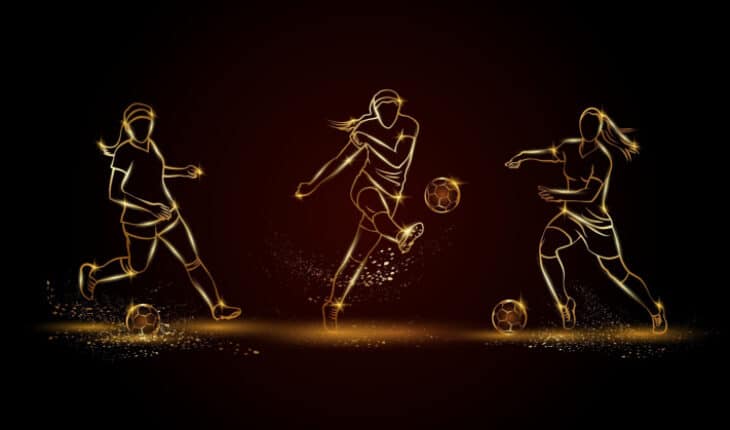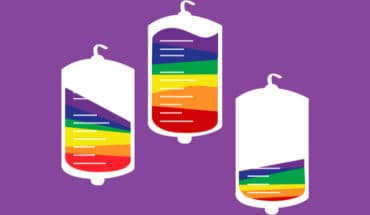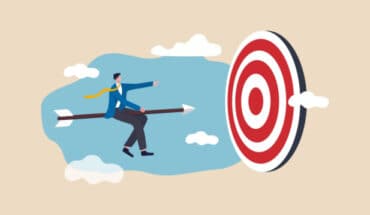Many people will have heard of ACL injuries, particularly when it comes to high profile sports as they are common injuries amongst footballers.
ACL injuries have hit the headlines in the lead up to the Women’s Football World Cup this summer, with many professional players side lined due to the injury. Women’s football is one of the fastest growing sports in the UK, following the success of the Lionesses in last year’s Euros, with a 15% increase in female youth teams registered with the Football Association. It is estimated that 100,000 more girls are playing football than five years ago.
So, what do we need to know when it comes to ACL injuries? Mr Saket Tibrewal, Consultant Trauma and Orthopaedic Knee Surgeon at Cromwell Hospital, answers the most commonly asked questions around ACL injuries and what to do if you get one?
What is an ACL injury?
Your knee is a hinge joint comprised of three bones: the thigh bone (femur), shin bone (tibia), and kneecap (patella). These bones are connected by bands of tissue called ligaments. A ligament is a structure that holds the bones together and helps to control joint movement.
There are four main knee ligaments: there is a ligament on each side of the knee called the collateral ligaments, and two ligaments deep inside the joint called the cruciate ligaments, which cross each other.
The anterior cruciate ligament (ACL) runs through the middle of the knee. The ACL helps to control rotational movements of the knee as well as preventing the shin bone from sliding forwards in front of the thigh bone.
Most ACL injuries occur during sports that involve sudden changes in direction, like football or skiing. ACL injuries can also be caused by excessive bending or straightening of the leg, a blow to the knee, twisting movements, or awkward landings when jumping, for example when playing basketball, netball, rugby.
ACL injuries are more common in women than men, and female athletes are four to eight times more likely to suffer an ACL injury than their male counterparts.
What are symptoms of an ACL injury?
If you injure your ACL, you may hear a popping sound and feel severe pain in your knee. Your knee may feel unstable and give way, or feel like it will, and you may not be able to put any weight on it.
If you’re playing sport, you are unlikely to be able to carry on as you will not be able to walk on it. You will usually develop swelling around your knee joint within an hour or two, and you may lose the full range of movement in your knee.
You will need to see a doctor or physiotherapist to get an accurate diagnosis of your injury.
Why are so many women getting ACL injuries?
There has been a rapid rise in the number of young athletes sustaining an ACL injury, with the biggest increase seen in teenage girls. With the Women’s World Cup taking place this summer, interest and uptake of the sport will continue to rise and so will ACL injuries amongst female footballers.
It is still not clear why ACL injuries are more common in women than men, and further research is required to investigate this. However, it is thought to be a combination of multiple factors including structural differences and hormone levels.
Women have a wider pelvis, which changes the mechanics of how the thigh bone, tibia, and femur function. This puts more stress on the soft tissues that support the joints. This higher stress can lead to either a chronic (overuse) or acute (sudden) injury.
Additionally, women have less muscle mass around their knees than men, which can lead to instability and a higher chance of tearing a ligament if it is overstretched.
Another theory is that the menstrual cycle plays a key role in injury risk, as oestrogen levels fluctuate through the cycle this might make women more prone to injury when levels are higher.
How do you treat an ACL injury?
If you do get injured it’s important you seek help as soon as possible, this can be from a doctor or a physiotherapist who will be able to support with treatment. There are some things you can do to help reduce swelling, pain and help recovery.
The treatment you’re offered for your ACL injury will depend on how severe the damage is and how active you normally are. The initial treatment will be to control your pain and swelling using the POLICE method. Further treatments may include physiotherapy, pain killers and if required, surgery.
POLICE Method:
• P – Protect the injury from further damage. You may need to rest after the injury, and consider using some form of support or a splint.
• OL – Optimal loading, start to put weight on your injury and build up your range of mobility.
• I – Ice, place a cold compress such as a bag of ice or frozen peas, wrapped in a towel onto the injury.
• C – Compress the injured using a bandage to help reduce swelling.
• E – Elevate the injury.
Does it always require surgery?
Your surgeon will discuss all treatment options and whether you would benefit from surgery to repair or reconstruct the ACL. This is often the case for very active people.
In the majority of cases it is usually best to wait for the surgery until the swelling in your knee has gone down and you have got a full range of mobility back.
Following surgery, it usually takes 12 months to return to full activity, such as contact sports, and so you will need to be prepared to undergo an intense and lengthy period of physiotherapy. You may however return to other activities such as running, cycling and swimming earlier if directed by your physiotherapist.
How do you prevent an ACL?
Injury prevention programmes are key in reducing ACL injuries. They have been shown to reduce the risk of ACL injuries by 50% in all athletes, and by two-thirds in female athletes who have sustained a non-contact ACL injury.
Some other tips would be:
1) Always warm up properly before playing any sport
2) Ensure to include stretches into your routine, in particular your thighs, calves and hips.
3) Strengthen your hips and thighs as they provide support to your knees and can help prevent ACL injury. Squats, walking lunges and core strengthening are some exercises to include in your routine.
4) Balance, agility, jumping and landing can all be improved with practice
5) REST is essential
What changes are needed to prevent more female athletes suffering from an ACL injury?
The first step is raising awareness of the problem, which has started to happen recently due to the large number of high-profile cases and media coverage.
We must look to create an environment for women’s sports, at all levels, that accounts for gender-based differences.
Removing stigma, such as those associated with women who participate in strength and conditioning training, would be a good starting point as we know that poor neuromuscular control is a significant, but modifiable, risk factor for ACL injuries.
Across all sports, integrated neuromuscular training programs (biomechanical, neuromuscular control, and strength training techniques) have effectively improved performance levels and decreased the risk of ACL injury.
Injury prevention programmes do not require extensive commitments in time and are simple to implement.
Why are ACL injuries so common in football?
ACL injuries are very common in any sport where twisting is involved like football, rugby, netball and skiing.
If you think of a long-distance runner, they run in a straight line, so their ACL isn’t as integral to their movement and performance as in other sports.
When we think about footballers’ movements – they sprint, jump, land, twist and turn. These sudden movements all put a huge force through the knee, and when the ACL cannot cope with these forces it ruptures.
Additionally, pitches are harder and firmer which doesn’t help, the speed of the game has increased, and players are playing more games. If you put all of these factors together, this is why we’re seeing more ACL injuries in football.
Another reason why football appears to be so linked to ACL injuries is simply down to the popularity of the sport, and therefore sheer volume of injuries.
- Inspired into Action: Summer Sport Surge - 2nd August 2024
- 2024 Health Trends: What to Try and What to Avoid - 30th January 2024
- Menopause & sex: breaking the taboo for a better love life - 17th October 2023






